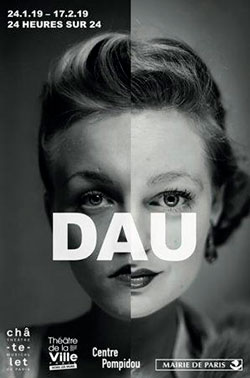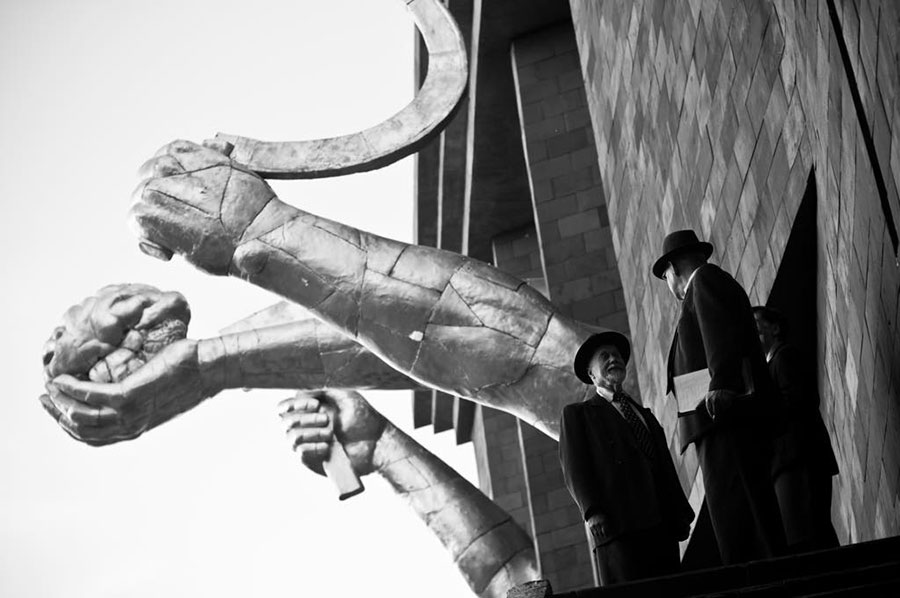
DAU. Paris, January 2019
Publié par Birgit Beumers - 19 février 2019
Catégorie(s): Cinéma, Expositions / Festivals
Prelude, Berlin 2018.
Ilya Khrzhanovsky’s project has been in the making for over ten years. It started off as a biopic about the Soviet quantum physicist Lev Landau (1908–1968), inspired by the memoirs of his wife Kora Drobanzeva. The production history has been surrounded by myths and scandals: about the Kharkov Institute of Physics and Technology, which Khrzhanovsky rebuilt in a derelict building in Kharkiv, Ukraine, and where, for a period of three years (between 2009 and 2012), actors and actresses, scientists and artists came to visit, participate and live under conditions of what Khrzhanovsky imagined to be Soviet life of the 1930s-1950s, no doubt meticulously recreating everyday life (the famous Soviet byt) in all its detail – from plates, cups and cutlery, pots and pans, furniture and linen to dresses and underwear. Many of the visitors were of international renown, giving the project an extra layer of gloss: “Many of the artists involved in the project now act as its ambassadors: artists Marina Abramović, Carsten Höller, Boris Mikhailov and Philippe Parreno; theatre directors Peter Sellars, Romeo Castellucci, Anatoly Vassiliev; designer Rei Kawakubo; musicians Robert Del Naja from Massive Attack and Brian Eno; actors Gérard Depardieu, Willem Dafoe, Lars Eidinger, and actresses Isabelle Adjani, Fanny Ardant, Isabelle Huppert, Iris Berben, Hannah Schygulla, Barbara Sukowa...” (Press Release). Over the three years, the director watched how actors, participants and visitors behaved under circumstances of total control, observation and denunciations. He filmed only on 100 days, during which he filmed 700 hours of footage. This process has been well reported (see, for example, Idov Michael. 2011. “The Movie Set That Ate Itself.” GQ 27 October. http://www.gq.com/entertainment/movies-and-tv/201111/movie-set-that-ate-itself-dau-ilya-khrzhanovsky?printable=true)
. Then came the problem of packaging the material: into a film, into several films, into a series or what? How to select footage, how to build a narrative, how to structure the material, often shot with a weak sound track because of the camera spying on the participants – or how to abandon the notion of a framework. In 2018 rumours began to circulate of a premiere event in Berlin, which would involve reconstructing the Berlin Wall for a length of some 3 kilometres (900 slabs) and immersing the audience in a visual spectacle within a constrained space. Suddenly, the project moved from a film or serial to a visual artwork or installation. And another set of problems arose: the immersive experience announced by the Berliner Festspiele for September 2018 had to be cancelled, because the municipality did not grant building permission for a wall that would have cut the traffic flow for the duration of the project. The project had turned from a film into an ambitious, site-specific, immersive performance event. The cancellation, due to the municipality’s intervention, added further fuel to Khrzhanovsky’s projection of himself as the artist-genius, victimised by the authorities, as he had been victimised earlier by the Russian Ministry of Culture which requested repayment of state funding on the grounds of non-completion, or when Kharkiv’s citizens and the municipality got fed up with three years during which entire quarters were turned into Soviet-era territory.
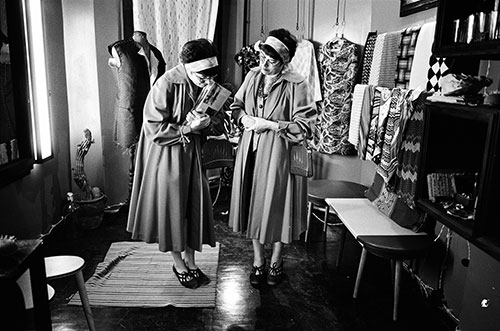
Paris, January 2019.
Khrzhanovsky announced the launch of the project on the second site, Paris (there were supposed to be Berlin, Paris and London as markers of freedom, fraternity and equality. The third location, London, 100 Piccadilly, where he had been editing and working on post-production for the last few years, sponsored by Sergei Adonyev and the specially founded company Phenomen Films, is scheduled for April 2019. In Paris, he marked off a triangular area (in the style of the Soviet avant-garde): the Théâtre du Châtelet and Théâtre de la Ville, on either side of the Place du Châtelet, both undergoing major refurbishment; and a suite of rooms n the Centre Pompidou. The project was set to run in Paris from 24 January to 17 February 2019. Although a press event took place on 24 January, on the first day the venue remained closed due to technical issues. A suite of rooms with furniture from the set opened in the Pompidou as part of the exhibition of modern art on the fourth level, and the venue in the Théâtre de la Ville followed, while the Théâtre du Châtelet was not cleared by the prefecture of Paris for health and safety reasons, and opened only on 4 February. A glass bridge to connect the two theatres on either side of the square was never constructed, but a glass pavilion that served as visa centre was erected on the centre of the square. The project is open 24 hours a day. In order to access, visitors complete a visa application online and pay 35 euros for 6 hours, 70 euros for 24 hours, or 150 euros for a permanent visa. Not all of the ambitious plans were implemented: the visa procedure wanted to ask psychometric questions of visitors on the 24-hour and permanent visas to compose an individualised audio-guide (DAUphone) through the project. Instead, the spectators just surrender their mobile phones and are left to their own devices, without explanation, instruction, or event schedule. Questions arise which of these components of the “experience” are integral and which decorative, ornamental and (over-)ambitious. Every visitor will have his or her own story to tell.
A visit. My visit.
I visited on 30 January. Only the Théâtre de la Ville was open, not the Théâtre du Châtelet, where apparently more art works would appear, some of which were also exhibited in the concert hall and performance space in the Théâtre de la Ville. There was no programme, no schedule, and no visa application form (not for myself, on a single entry visa, but neither for a friend on a multi-entry visa) in which to disclose personal weaknesses and “psychometric” information. There was no guide in the form of a DAUphone, I assume for reasons of management, or maybe to strengthen the sense of disorientation (of which more later). Visitors had to lock their mobile phones – apparently not so much for full immersion into another time period, but to stop you from taking pictures and purchasing instead the postcards at 2 euros a piece or one of the books, one for each of the 13 DAU-films (varying in length between two and nine hours) at 24 euros a piece — only three of them had been released at the time of my viewing, all untitled but numbered. Again, words, titles, themes would give us the sense of a narrative, which the director seems to want to avoid at all cost. At the same time, the immersive experience has its limits when it comes to commercialisation of the event itself, with a shop, a restaurant and other products.
I enter at noon, as my visa specifies; since I have a single entry visa for six hours, I have no right to leave the building and return. The building has five levels. Someone tells me that there will be three events at 12.30. One is in the cinema, and it is a screening of one of the 13 films. So in the first half hour I explore the space: I receive a flyer, which I thought might explain the layout of the theatre on a horizontal plan (a map), but it is vertical instead. On the top floor there is a small stage under the cupola, with some artwork on the walls and a small screen where a slow-moving film shows some medical experiments on mice and then observations on a baby ward. The film soon ends. Along the downward staircase (this is called “body” on the vertical cross-section) I roam around the third floor, with a suite of rooms furbished in the style of the 1950s (and similar to the suite I would visit later in the Pompidou, once I reach the museum after my six hours at the theatre – and I am not sure why we need this third venue). The rooms have original furniture, gadgets and designs, presumably brought here from the set in the Institute in Kharkiv, where the participants experienced Soviet life in real time over three years. There is nothing surprising here: some old cups and plates, some basins, bedding and tablecloths, which those of us old enough to have been to the Soviet Union still remember, maybe from their own childhood and maybe from visits to more remote parts of the former USSR.
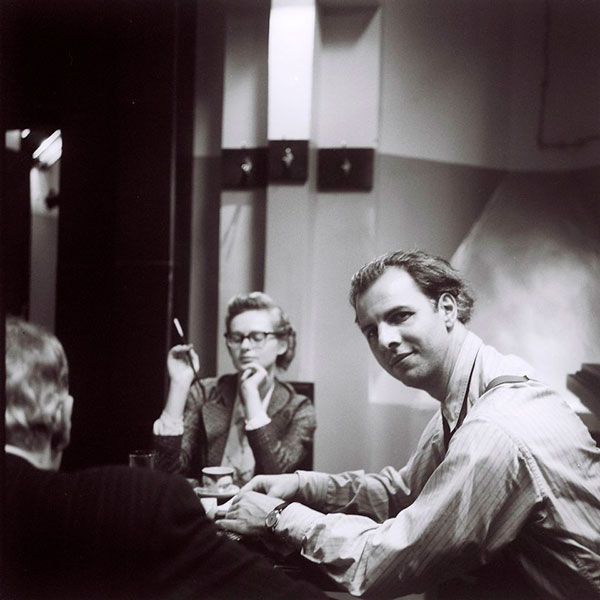
One level down there is a Soviet-style canteen, with three menu options: decent, good and very good, reminding us of the “second-degree” freshness of Mikhail Bulgakov’s salmon in Master and Margarita, only here the menu consists of borshch and herring, borshch and beef tongue, or borshch and vegetables. All with kompott (fruit stew) as desert. And priced between 10 and 20 euros – not exactly cheap for Soviet stuff. Everything is served in aluminium bowls and cups, more prison-style than actual Soviet living from the 1950s, but the visitors get the point: we are tourists in a Soviet camp. We surrender our personality and our contemporary world to immerse ourselves in the fake world of an authentic past. But is it authentic? Because not for one moment do we forget that this is all fake – at the very latest when, near the exit, we pass through the gift shop and get the option to purchase all those aluminium cups and plates, spoons and forks. It is recreated for us, for our pleasure – of being traumatised? Of watching actors having nervous breakdowns that are not played, but real, because they have been exhausted by the conditions on the location (the reconstructed institute) from which we can exit after six hours or earlier if we wish, but they cannot? I have never liked being a tourist. I don’t like being pushed around. And I have always disliked Disneylands. But I did live for a year in the real Soviet Union, albeit already at the dawn of perestroika.
On the mezzanine floor there are booths where the visitors can go and ask questions of the participants. I don’t. On the ground floor is said gift shop, where visitors can purchase (no real money, card purchase only, and totally out of sync with the whole immersive experience) books, postcards, bulletins – all published by Phenomen Films, as well as said aluminium dishes and cutlery.
Finally, I reach the basement. By the way, it is freezing cold in the building, as it is still a construction site, with wooden scaffolding and hired cubicles as toilets. I get allocated a booth where I can watch footage, some of the 700 hours, I assume. Finally, I am left to my own devices and can make choices: I can click on one of the twenty or so moving-image thumbnails on the computer screen and watch slow cinema, observe the action as it unfolds in real time – nothing new here, for those who know their film history: Agnès Varda has done it in Cleo, from 5 to 7 (1962), shot in real time; Lav Diaz continues this observational mode with his long takes of real life in his films, From What is Before (2014) to The Woman Who Left (2016). On screen, we can watch a dinner party, or a conversation between Landau and his wife (called Nora in the project and played by a professional actress), or an interrogation of one of the scientist at the institute. Alternatively, I can zap between all those films, each set on a loop, and glimpse into a scene of two characters having sex; listen into Nora’s nervous breakdown during a conversation with her mother; watch from two different camera positions the heavily pregnant Nora and Landau moving in together and Landau setting out his conditions of free love. Or I can watch a split screen with a party, where the women are in the kitchen and the men in the dining room. I can move around the world in which Landau lived, the different locations (albeit all at the institute), different times, and different characters. There are the theatre directors Anatoly Vasiliev, Peter Sellars and Romeo Castellucci; there is a scene with Marina Abramovic in discussion with one of the scientists. In other words, in this world, real characters from the present intersect with the enacted characters of the past that are embodied not only by actors but also by cultural figures. Thus, the conductor Teodor Currentzis plays Landau. He is of Greek-Russian origin, and so is the Landau of the film, even if this figure has very little to do with the real man: Lev Landau was not of Greek extraction, but born in Baku to Jewish parents and his death in 1968 was not as mysterious as the information on the Dau project pages suggests. This is myth, not real life; fiction, not document. It is all fake but claims to be authentic. Just like the visa procedures and the aluminium cups.
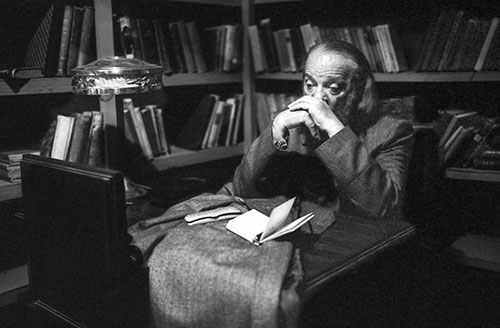
In other words: we must ask ourselves the question of the relationship between fact and fiction, between immersion into a fake past and the re-enactment of a (pseudo-) documentary truth in the present. The project deliberately blurs not only narrative strands, but also different historical times – although not locations, which remain stable in the (fake, rebuilt) Kharkov Institute, at least judging from the bits I have seen – and it denies coherence or structure. Hence, the lack of a concept for the installation is likely to be a part of the project itself. There is a deliberate chaos, and we can only guess which of it is designed and which of it is the result of unrealised ambitions. The aim is to destabilise our perception, to throw us into the chaos and the unstructured experience of people in a totalitarian state. Or so the director imagines. Because, born in 1975, he can barely remember the Soviet experience beyond that of a schoolchild, but may have learnt about it from his parents, the well-known animator Andrei Khrzhanovsky (b. 1939), and his grandfather, the painter Yuri Khrzhanovsky (1905–1987), a member of the Filonov School.
There is something over-ambitious (many journalist use the term “megalomaniac”) about this project, where the director wants us to undergo an experience that he only imagines or invents, while claiming authenticity and verisimilitude – which he cannot offer. Indeed, what does the spectator understand? What if we don’t know anything about the project and its ten-year history? Or about Landau? Or about the Soviet past? Of course, destabilisation is always uncomfortable, but it allows us to gain insights we could not have gained otherwise. And yet, in order to be destabilised, we need to depart from a position of stability (in this case a framework that would then be taken away or dismantled) – but there is no such framework in the first place. This makes in itself for an interesting experiment and at the same time it represents, in my view, the most fundamental flaw in the project: the lack of conceptualisation. It may work for a select minority, such as Slavic scholars like myself, such as the numerous Russian émigrés who visit the event, or the devout followers from Russia’s journalistic community, many of whom are supportive of any project by a Russian artists that has – especially in the current political climate – had to be taken out of the country to be implemented; but not for the hundreds of uninitiated spectators (apparently expected, judging by the approximately 1,000 lockers for the mobile devices). And this is not a project that is anti-Russian: it reveals a second-hand hatred of an imagined Soviet past, but is likely to feed on the current international climate.
There is a huge risk in assuming that the spectator knows anything about Landau, about the Soviet Union, about the difference between the 1930s, the 1950s and the 1960s. There is no story, no chronology. There are different characters who crossed Landau’s personal and professional life, such as his wife Nora (real name Kora Drobanzeva), played by the Ukrainian actress Radmila Shchegoleva. There are also scientists from the present, such as the physicist Andrei Losev (b. 1963), the Nobel-Prize winner David Gross (b. 1941), the neuroscientist Jim Fallon (b. 1947), a stem cell expert with significant discoveries on schizophrenia, Alzheimer and Parkinson – diseases that were not known then, but that apparently create a connection to Landau’s work for today. There are figures that are half-made up, such as Anatoly Krupitsa, a figure loosely based on the physicist Pyotr Kapitsa (1894–1984) and rendered by theatre director Anatoly Vasiliev, suggesting the merger of real-life character with the historical figure already in the name. There are also some religious figures, including the shaman Vyacheslav Cheltuev, the rabbi Adin Steinsaltz, or the Russian-Orthodox Hegumen Daniil. And there is the US performance artist Andrew Ondrejcak, who experienced some violent attacks during the project from right-wing extremists and Neo-Nazis that had been invited to stir up the atmosphere.
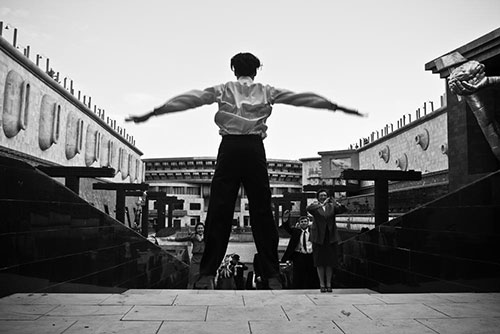
Whilst there are numerous people from the world of science and the arts, who have been drawn to the experiment and visited the site in Kharkiv during 2009–2012, adding a contemporary dimension to the project, the result presented in Paris (even if incomplete) comes across more like a curiosity shop than an artistic or immersive project. In my view this has to do with a project where everything is possible thanks to seemingly unlimited finance, where in a jungle of ambitions the director has lost focus, and where Khrzhanovsky has lived in his own bubble (including one of fame) without truly engaging with the broader, global artistic context. He is so immersed in his own world that he has lost the distance to his own work, and claims ignorance about current developments in visual and performing arts (unlikely in view of his knowledge of the artists working on his project). Yet at the same time, he must realise the lack of formal innovation in his own project. In interviews, he has claimed to be unfamiliar, for example, with the editing work of Nicholas Roeg or some site-specific performances. It appears that the entire project can only survive by claiming that the created chaos is intentional and by making the “scandalous” interventions by local authorities look like deliberate Soviet-style acts designed to prevent free artistic expression. Artistic expression – of what? That “unmeasured, violent, confused” experiment described by Aureliano Tonet and Brigitte Salino of Le Monde (2019) (Tonet, Aureliano and Brigitte Salino. 2019. “A Paris, ‘Dau’ seme le trouble et les roubles.” Le Monde, 19 January. https://www.lemonde.fr/culture/article/2019/01/19/dau-le-projet-artistique-fou-qui-seme-le-trouble-et-les-roubles-a-paris_5411699_3246.html) ?
Tonet and Salino observe that the project, spanning the period 1938–68, does not aim to reproduce history («on ne cherche pas à reproduire l’histoire»). It is precisely the intersection of the present with the truthfully recreated past and its circumstances that looks fake at every moment, on screen and in the exhibition space, which could have made this project a cutting-edge conflation of different times, proving the impossibility to recreate the past in any meaningful way. However, such a bold move is way beyond (or beneath) Khrzhanovsky’s project. He mixes temporal layers, past and present, but instead of setting side by side the layers of past and present, fake and real, he conflates them without allowing himself, or the characters, or the spectator the vital and crucial distance for – emotional or rational – engagement. This creates no more than what the journalists of Le Monde call a “cryptocommunity,” forcing the audience to become followers or sectarianism, to accept required roles, to respect the rules of Khrzhanovsky’s game with his participants, his curators, and with us. It is precisely such a distance that makes performances about the past authentic and allows immersion: when we see the gap between actor and text – a lesson Khrzhanovsky could have learnt from Anatoly Vasiliev. Not for a moment do I, as spectator, believe that Nora is having a nervous breakdown because of Landau; instead, I can feel the discomfort of the setting in which she is placed, the director’s demands, the exhaustion of living on the set – in short, the discomfort of the actress and not of the character. As the film scholar Mikhail Yampolsky comments on another scene: “The sex on screen is genuine, but the entire situation of incest is simulated, which is well visible. [...] The excess of a presence turns into an enacted simulation” (Yampolsky [Iampol'skii], Mikhail. 2019. “DAU: Ekstsess, isteriia, razrushenie.” Seans 23 January. https://seance.ru/blog/dau-yampolski-fragmentum/). The ethical issues for a director who turns himself into a dictator to show us the traumatic impact of totalitarianism and the perversion in human behaviour it can cause – that’s another matter.
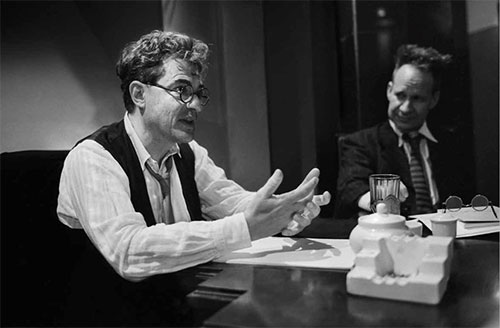
Epilogue, Berlin 2019.
In February 2019, some two weeks after my DAU experience, I went to see a production by the Argentine stage director Lola Arias, titled Atlas of Communism and originally staged in autumn 2016 at the Maxim Gorky Theatre in Berlin. Lola Arias based her project on the memoirs of several women from different backgrounds and generations about their experience of the GDR and the fall of communism. The women tell their stories, from their WWII experience to the present day; they represent different political, social, educational groups. Atlas of Communism uses authentic texts and real people, telling their stories against projections of original documents and authentic photographs onto a screen that separates the stage, and the audience. There are different layers of space and time, yet without a sense of fake. The past remains in the past; it is recollected, it is a different time viewed from the present, a time on which the present is built, both in social terms and as a building block for the personal lives of the characters. By remembering and returning to the past, it remains clear that this is not the present, but its foundation.
There are other ways to explore the past, or the impossibility to comprehend it, than huge, ambitious, expensive projects funded by oligarchs and hyped up by the media. “All these machinations remind us of Wagner’s megalomaniac project in Bayreuth...,” says Yampolsky. A bit less ambition is sometimes more beneficial to produce great results, as Arias’ work made on a shoestring budget shows. Her work is clearly conceptualised and articulated, and her renown goes beyond scandals and the Russian press, which supports “their own” without fail. Yes, this is an ambitious project, which brings out some interesting moments in human behaviour, but it is a filmed psychological experiment, and not an artistic concept-work. It may be the twenty-first century response to the Milgram experiment (1961) – a comparison Yampolsky also makes – with one difference: the Milgram experiment was conducted by a professional psychiatrist at Yale University and not a filmmaker in a self-made time-bubble, raising important issues of ethics and responsibility. Even in 2019.

